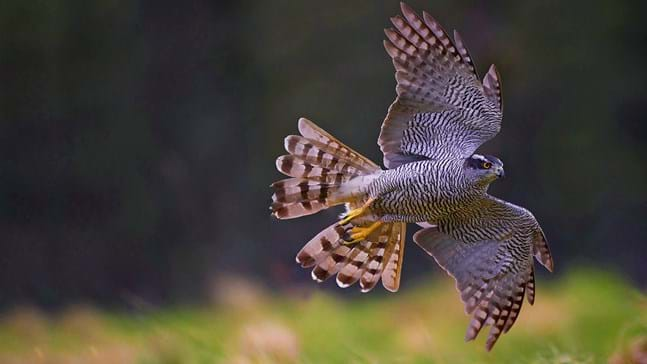
Credit: Tim Preston / WTML
What do goshawks eat?
A high-speed hunter that effortlessly weaves through its woodland home, the goshawk can take a wide variety of prey. Common food includes other birds, such as wood pigeons, corvids (members of the crow family) and game birds. Squirrels, rabbits and other mammals are also regularly taken.







